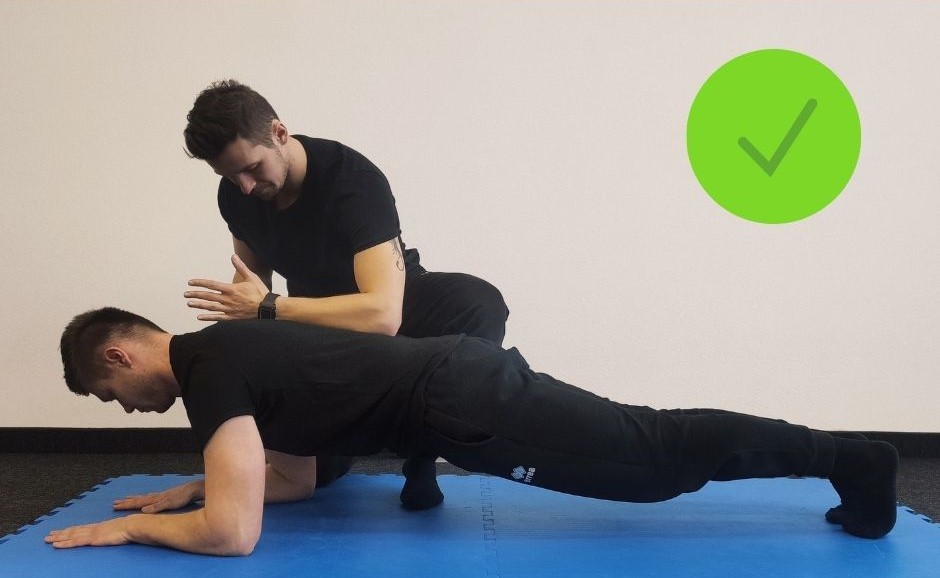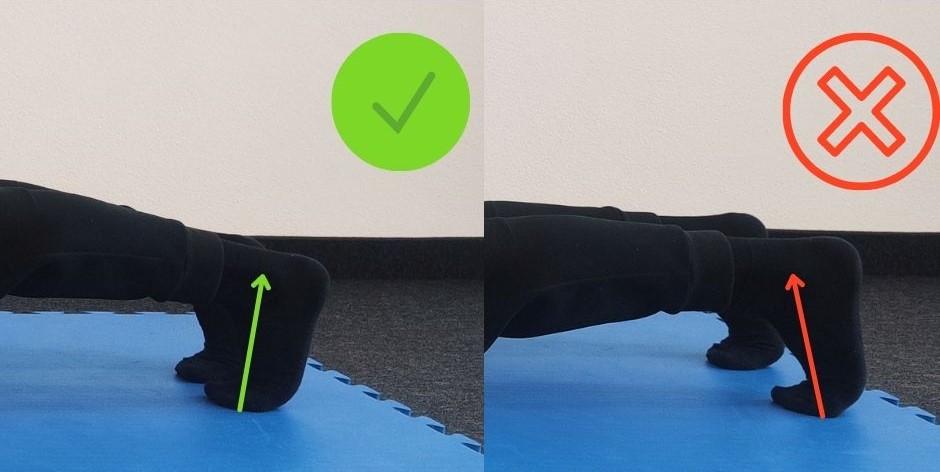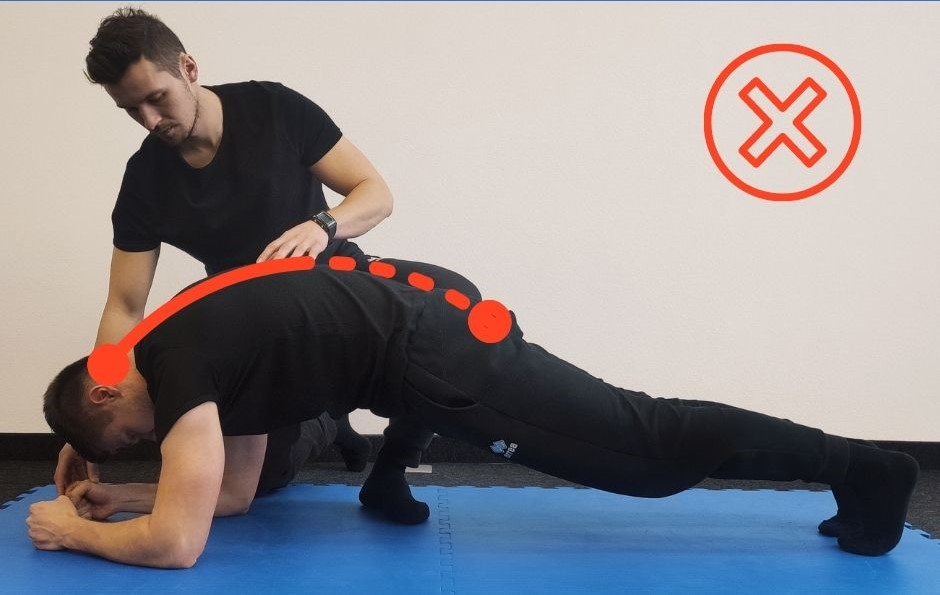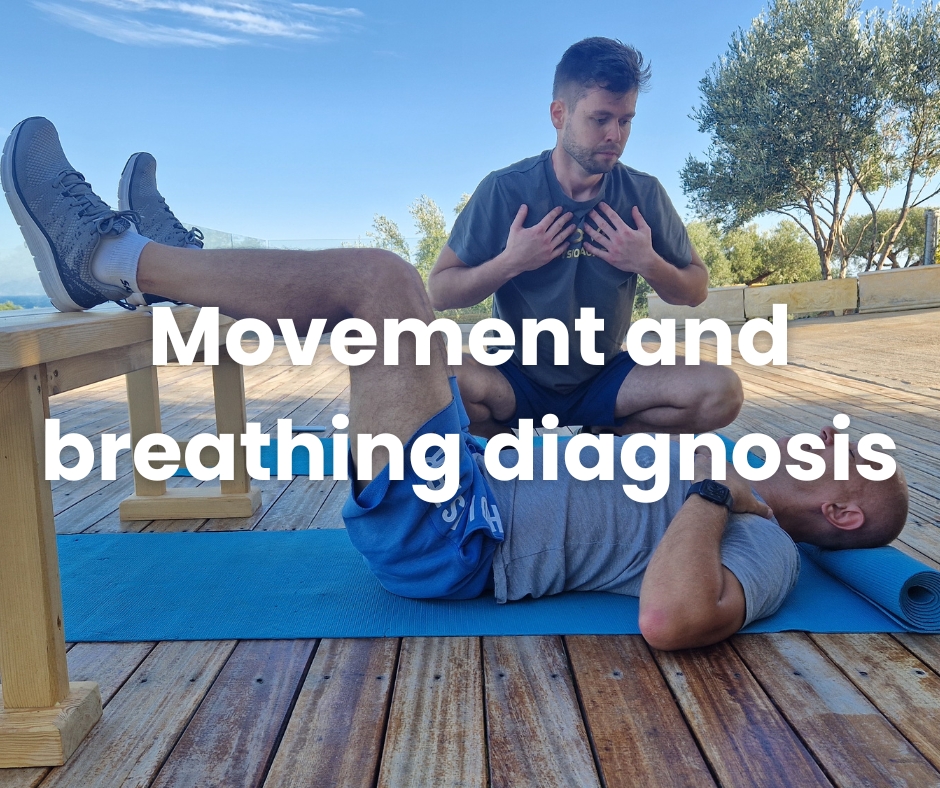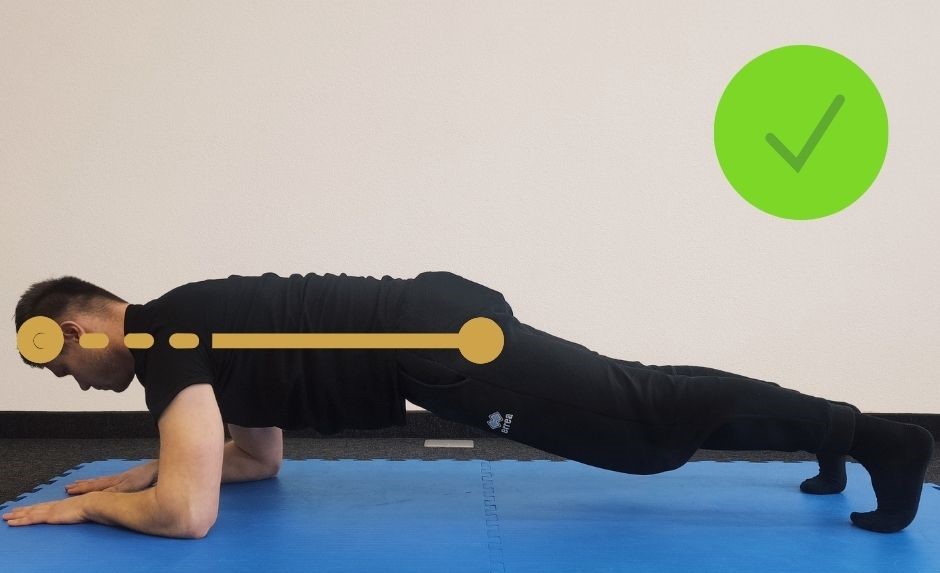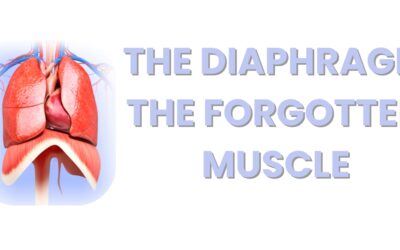There are so many myths out there about the
plank exercise that no one would have a look behind it.
The idea has reached trainers and through them the public and plank became popular…if you do it with incorrect technique it is not functional, it can be harmful…

Instructions from sport physical therapist
Why should you correctly do the plank?
Plank exercise is a popular exercise for many people, such as for the recreational athletes but also those who practice sports professionally.
If you like to practice this exercise or you´re about to practice it, read the instructions from a sport physiotherapist who will teach you how to do this exercise technically correctly, first.
The plank is often included in the training plans not only designed for athletes but also for people who exercise at home, as it is a seemingly simple exercise that does not require any tools.
However, proper technique is an essential part of this exercise because improper execution can do more harm than good.
A simple-looking exercise hides quite a lot of complexity. Let’s talk about some of the most common mistakes people make in this popular exercise.
What mistakes should be avoided when practicing plank?
Before we explain the correct execution, we need to understand how to get into the position correctly and why it is important.
When we practice plank on a mat, we usually forget several details that affect the correct technical pattern.
Let’s start step by step and explain every detail and part of our body during the plank:
Hands, shoulders and elbows (arm, shoulder and elbow joints)
A common mistake that can occur is our support in the elbows. In most cases, it is the incorrect position of the arms that reach too far front or too far behind the elbow, thus putting shoulders in the wrong position, too.
Little attention is paid to the shoulder blades, which keep sticking out and, in the end, the palms, which are mistakenly clenched in a fist or twisted on the mat.
The elbows must be placed on the mat under the shoulders at a 90 degree angle.
The shoulders should be relaxed and active in a natural position and the palms should be spread out on the mat, with shoulders in correct position.
Feet, ankles and toes
The toes of our feet should not get in front of the ankles. Instead, the ankle joint should remain in a neutral position.
It often happens that people get cramped in the plantar part (lower part of the foot). Therefore, it is important to keep up the ankle level.
Cervical spine – the position of the head and the chin during planking
Probably one of the most common mistakes is the position of the head, which either falls towards the ground or is bending backwards and the eyeline is directed in front of the body.
Moving on to the cervical spine, it ought to be in an upright position. The eyeline is perpendicular to the pad and the jaw is pushed back so it is in direct line with the spine.
The movement itself should feel significantly more relaxed when done correctly.
It could feel strange at first but it is the basis of the correct technique of the plank.
Position of the spine and pelvis during the plank
By frequently pointing out the position of the spine and torso during this exercise, most of us will already be able to see that when the back is located in the so-called hyperkyphosis, i.e., the back is hunched over, it is not optimal.
With our hunched back, we unnecessarily overload our shoulders, cervical spine and straight abdominal muscle.
At the same time, the back in the so-called hyperlordosis (back with excessive curvature) is a technically wrong position that can prove to be more harmful rather than useful due to wrongly placed chest and consequently overloaded torso.
Many people have a pelvic position problem and are naturally in the wrong position during this exercise.
In order to perform the exercise correctly, the back, the head and the pelvis should be in a straight and neutral position.
Let´s not forget about properly activated deep stabilization system and of course, breathing through the diaphragm without over-involving the direct abdominal muscle.
Improper muscle activation
During the plank, we should mainly strengthen the body’s deep stabilization system.
However, from experience, we know that most people overload the straight abdominal muscles and even unnecessarily activate the buttock muscles.
If done correctly, this should be avoided.
It takes a while to learn the right implementation of these advises, but it is definitely worth investing time in.
This muscle overload also affects the wrong breathing stereotype.
Respiratory biomechanics is of great importance in terms of activation of intra – abdominal pressure. We teach it comprehensively on our one-on-one sessions with physio body diagnostic.
Breathing while exercising plank
Plank is a simple-looking, but all the more challenging isometric exercise. During plank it is advised to breathe through the nose, this includes inhaling and exhaling.
Breathing should be directed to the diaphragm, specifically to all walls of the abdominal cavity, not just forward.
How to execute the plank correctly?
In the plank position, it is important to keep the body in an upright position. From the details mentioned above you now know what to look out for, and especially why.
Let’s summarize it:
For exercise to be correct and have maximum effect, the head, cervical, thoracic and lumbar spine must be in one neutral position, along with the correct position of the pelvis.
The shoulders should be in the neutral position and the elbows are perpendicular to them on the mat. The palms are spread flat and fingers point straight ahead.
The head with the cervical spine is in a neutral position in the torso extension and the eyeline is perpendicular to the pad.
The chin is gently pushed back into the neck area.
Breathing is directed in all directions of the abdomen and the bottom muscles are in natural activation, not contracted.
During the exercise, inhale and exhale through the nose to improve the supply of oxygen to the muscles.
And we mustn´t forget the correct position of our toes, ankles and feet.
Why is it important to execute correct technique?
The technical precision of any exercise brings benefits in the form of an injury prevention and prevention of unnecessary physical complications that can occur with a long-term incorrect stereotype habit.
By activating the right muscles, we help increase the strength and power of the deep stabilization system, while not overloading the muscles that we need to function during other physical activities.
You can learn more during one-on-one sessions after a physio body diagnostic, where we also focus on a deep stabilization system, exercises to strengthen muscles and prevent injuries, and last but not least, effective regeneration through cold exposure, breathing and sleeping.


